About still-lifes, Rotko and plans
April 28, 2021
My studio was filled with the whiff of bergamot. I cleaned the floor and it became clear how to make this day, how to sort out unframed paintings, which are in the way of new ones, and what to do with my photo footage. Having taken away a still-life from my easel, I paused to think how long I had been working with still-lifes.
Well…since university. Even then I cared about how to show personality through his belongings and I chose this theme for my final paper defence. I still love this genre for its hidden game – to tell about a person without his presence.
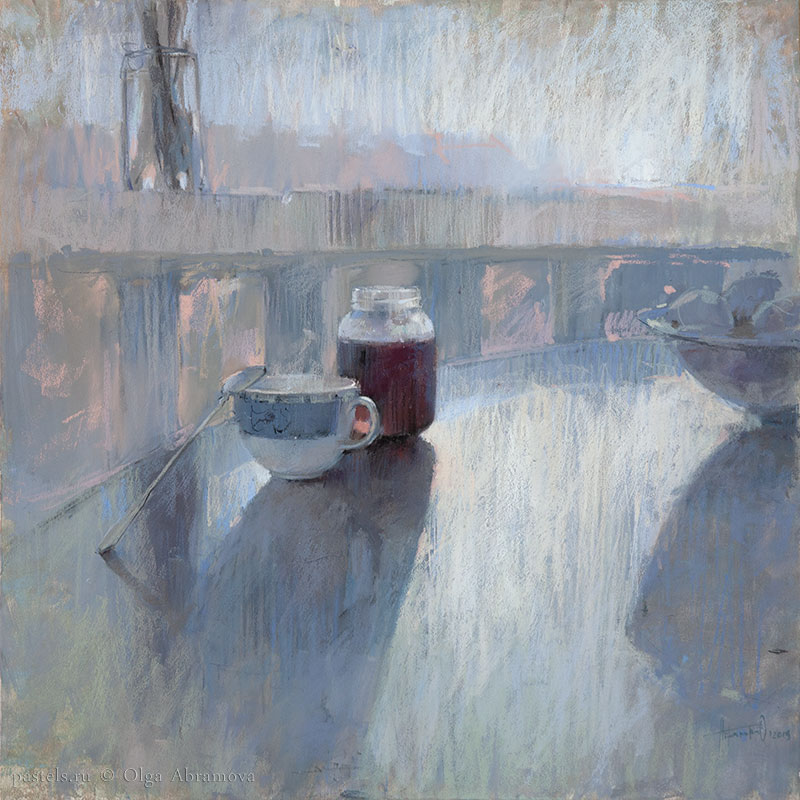
In the course of training, however, I was always concerned about the one-sidedness of academic still-life models. Our art teacher put up magnificent examples, clearly seen from anywhere in the class. She came one hour earlier and worked on draperies, fruit and dombras. Dombra always fell into the neighborhood with grapes or plums, standing out vividly on colorful draperies. This was supposed to teach the students to see form, color, and their interaction, but no personal history could be traced in the staged still-lifes. Sometimes we painted glass with branches on simple backgrounds – and it was spring with the feeling of something new and light, giving way to glimmers of hope that a still-life could be something more than an accurate rendering of the color of objects and their construction.
Since those university years I haven’t liked meaningless folded draperies around the objects, collected by volume, but not by a life story. Writers have the rule – write and edit. Artists have no different path – draw and cut the excess, leave only the most important things. And if the main character is a drapery, then let it speak.
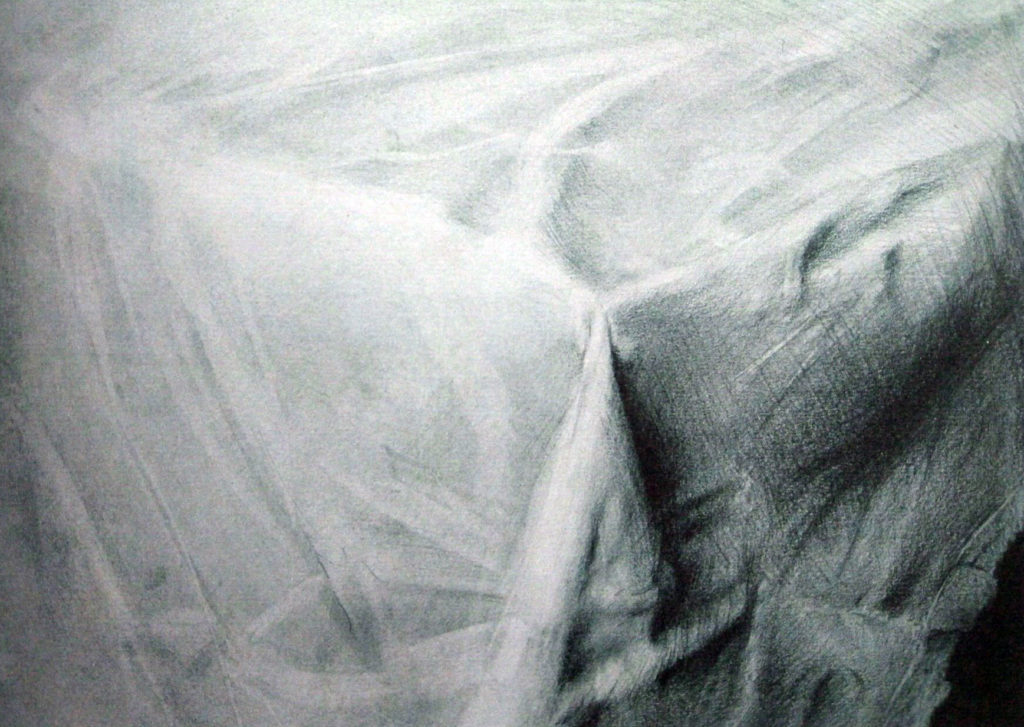
There is a great example of this – the drawings of Piotr Sonnewend, whose pencil and charcoal draperies live in the picture as the main characters.
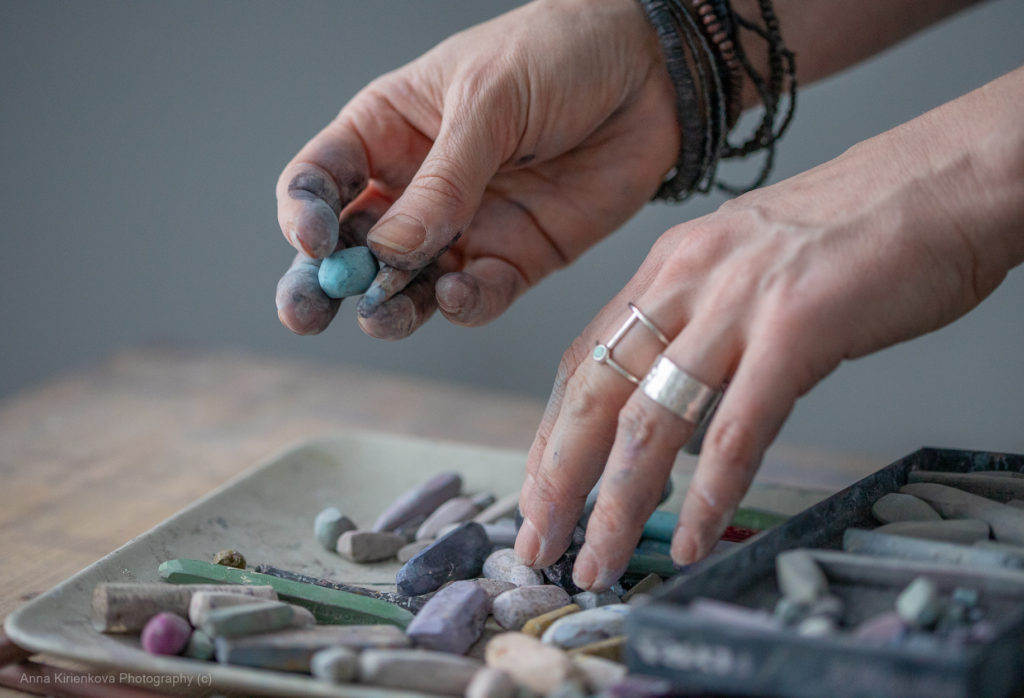
Still life in the translation is “dead nature”, and I don’t agree with this definition at all. It cannot be dead in the ever-changing light, combinations of objects and contingencies that make up the most poignant still-lifes. Yes, I love this theme. I sometimes like telling stories head-on with flowers and vases, but more often I explore subtle-sounding combinations, based on emptiness and a few objects.
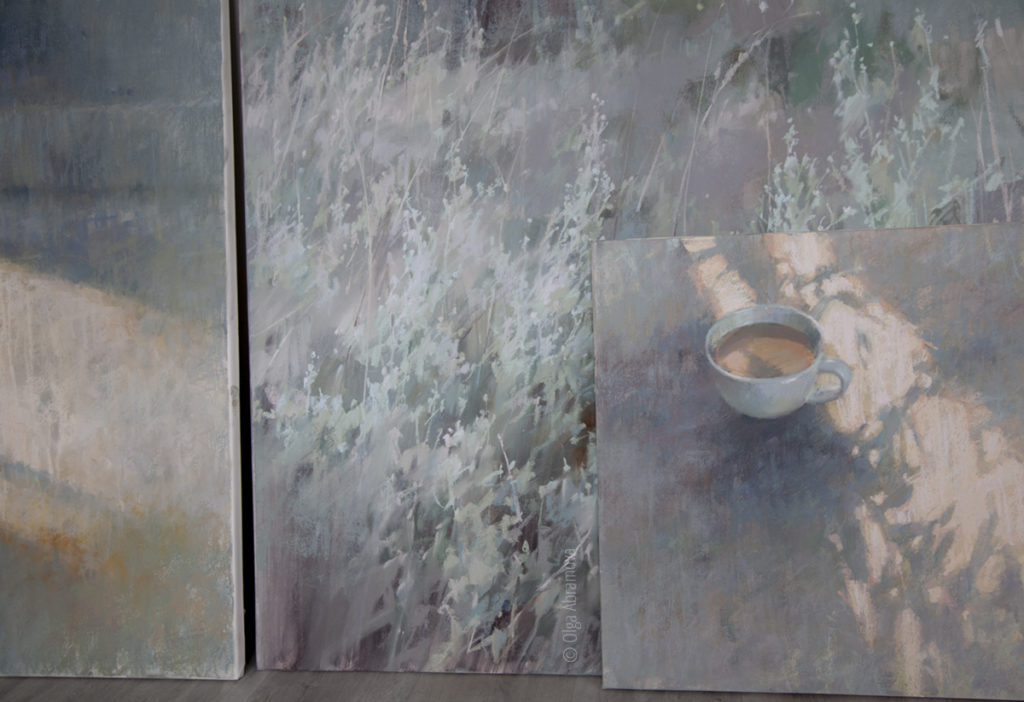
What do I paint? I guess, I paint the very same feeling of a person, light, air and state through objects, but not the objects as such. This feeling can easily disappear, if color, tone, or composition spots are not quite right. ‘Spots’ is probably the most accurate description of how I feel about my characters in the painting – large and small, dark and light spots with a certain shade. I’m sometimes reluctant to hammer out details, because I’ve found the right spots, which depict my feeling. Every artist chooses the degree of object recognition to their taste. I make objects recognizable as yet, but I enjoy looking at abstractions, one-piece forms, or almost disappearing subjects. This love has been going on for years, somehow refining and modifying my artworks.
Discoveries
Not long ago I bought a book online. It was Mark Rothko’s biography. I was looking forward to getting it, so that in the evening I could immerse myself in the atmosphere of his time. The long-awaited delivery arrived, and after unwrapping the package, I found out a comics book – red, ginger, black, and just a little text. I was upset at first, but then I got carried away, as if I was watching a full-length animated movie. There I found a curious dialogue between Mark Rothko and his teacher Max Weber.
MW – Art is not a display – it is a revelation. With hatches and colors we go beyond the obvious and carefully move towards the sublime. Artist should create not beauty, but emotion.
MR – Is there any emotion in a still-life?
MW – This is the secret of life, you will solve it by giving an answer to this question of yours.
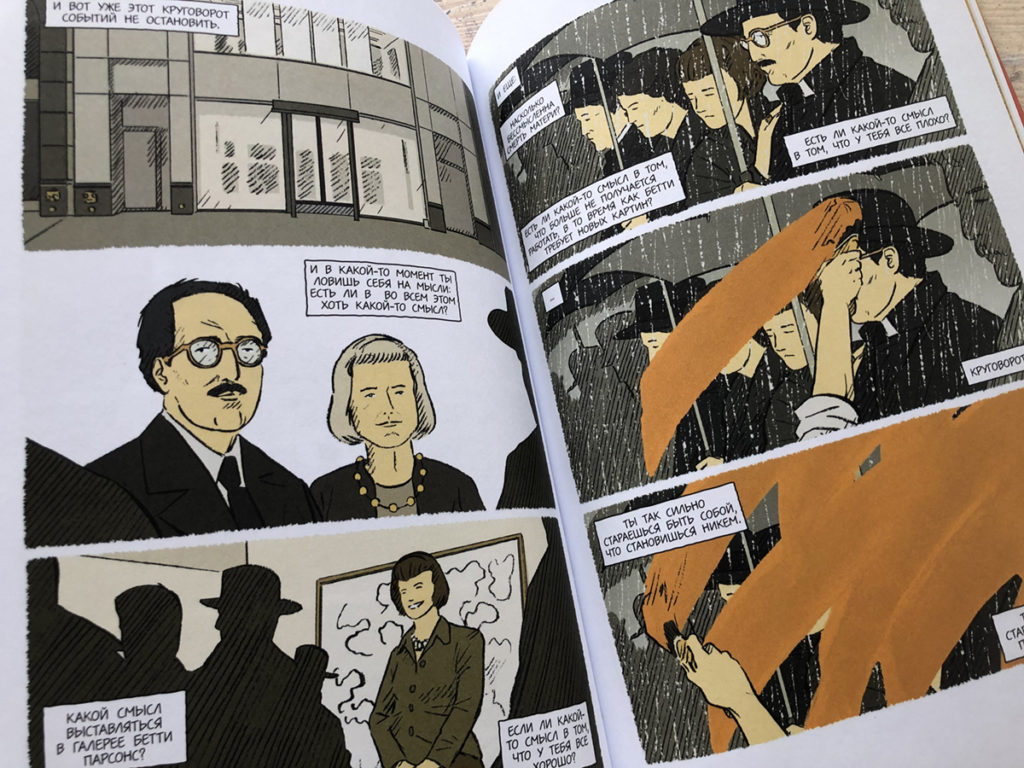
The authors of the book, Francesco Matteuzzi and Giovanni Scardelli, conveyed the main ideas in such short, characteristic dialogues. Definitely, Rothko became somewhat closer to me because of heart-to-heart intimacy of the comics. I’m considering ordering a couple more comics to study.
And some news
The exhibition in France, which was supposed to take place in August and which I wrote about in the previous post, has been postponed to 2022. But don’t worry, I am preparing a solo exhibition in Moscow at the end of May and will soon share the details. By the way, the biggest part of my new collection will be devoted to objects and their absence in still-lifes from the “Blueberry” series.
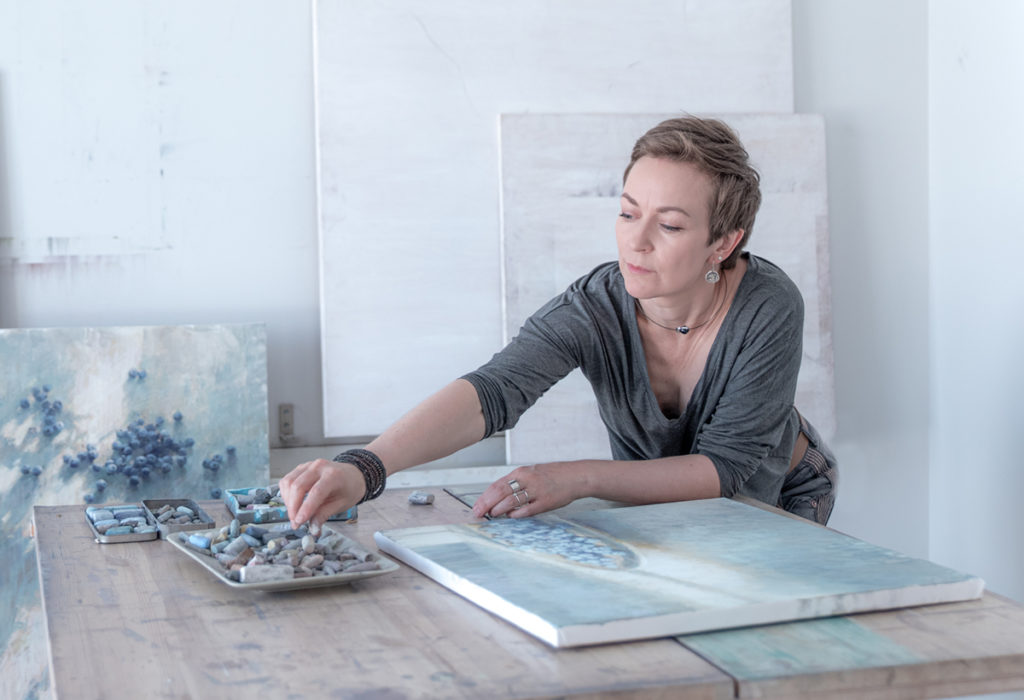
See you soon!









